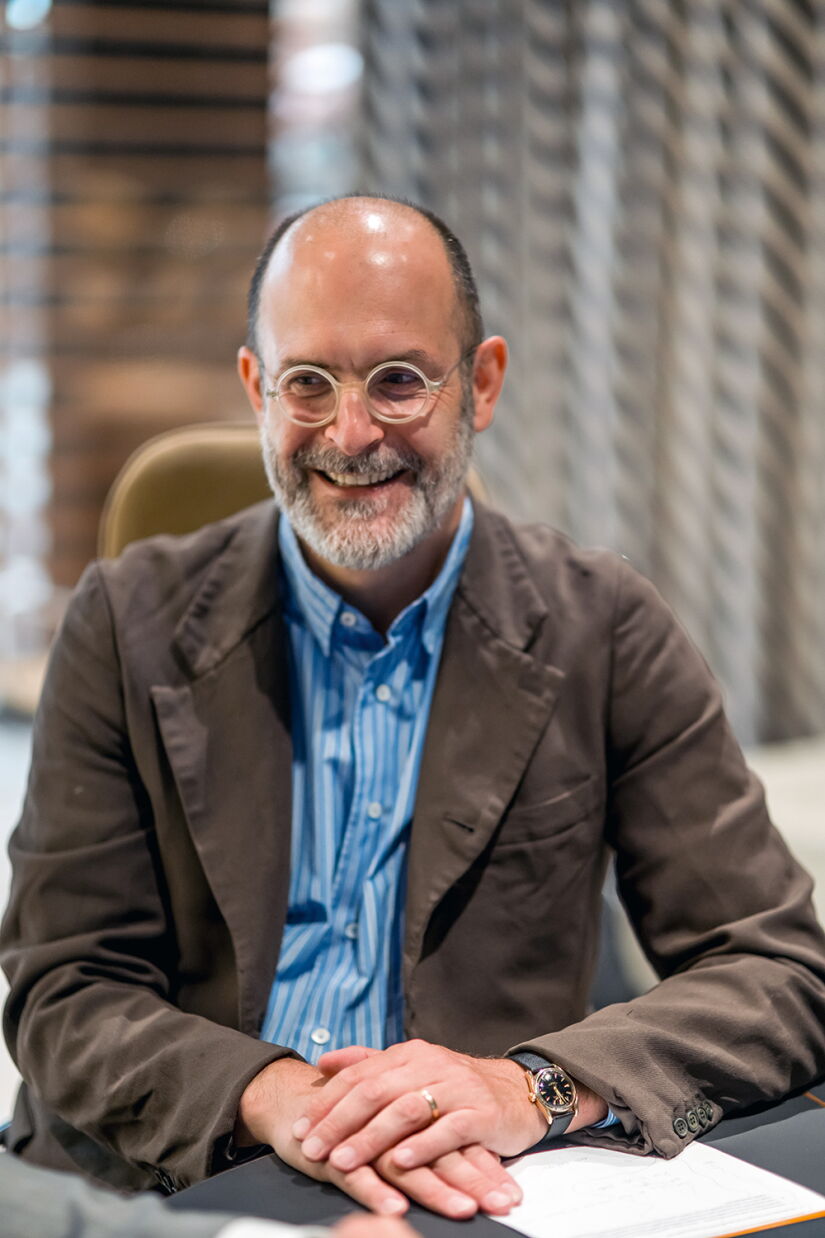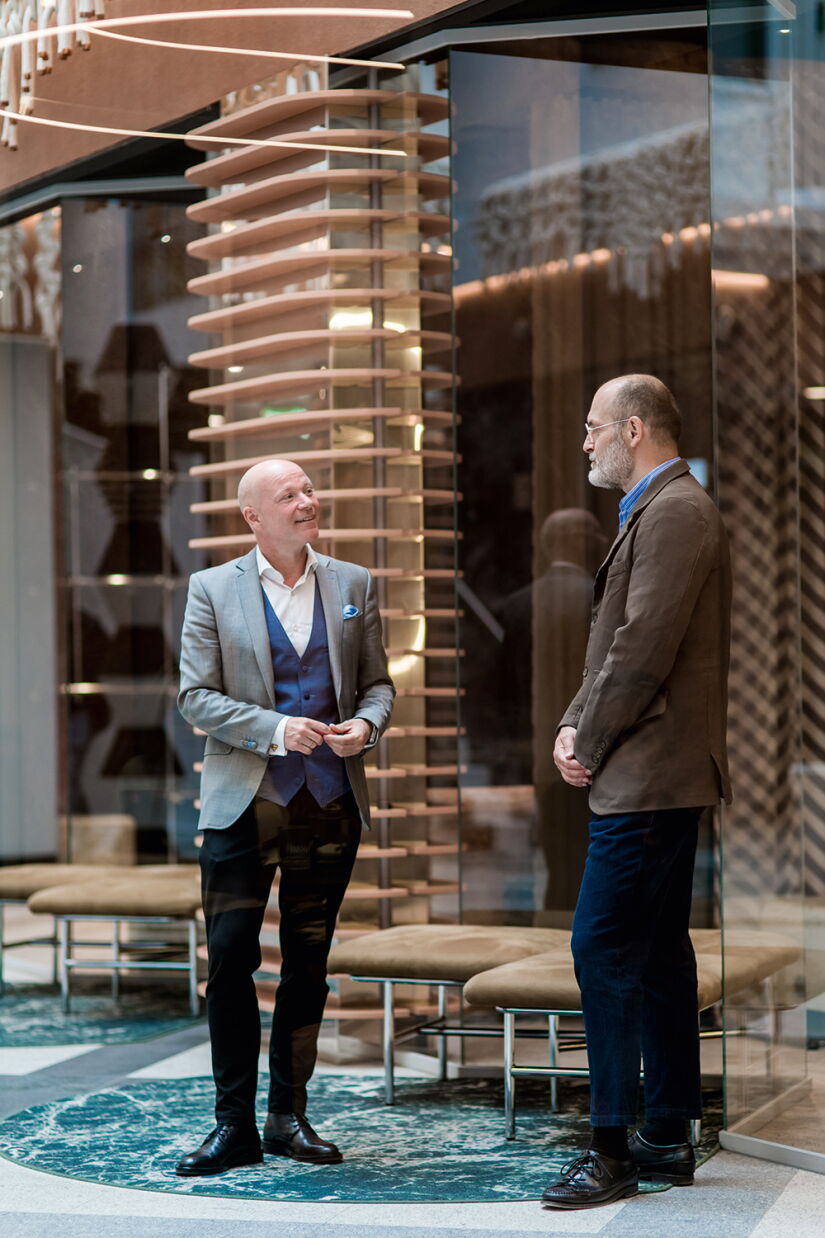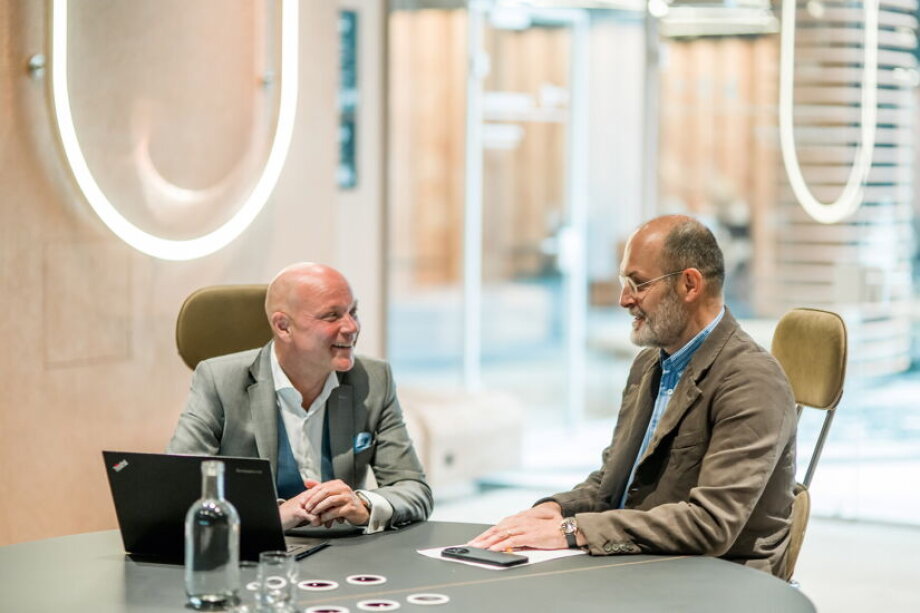Interview by Morten Lindholm
Photographs by Ania Starkey
WBJ: Why did you decide to launch Syrena Real Estate?
Witold Zatoński: I would say it was a need to capitalize on the knowledge I gained throughout my career. I started as an attorney, focusing on M&A transactions and public equity listings in Poland during the early 2000s.
Later I transitioned to working with GTC, where I spent a decade as a board member. I found myself immersed in the world of real estate, despite having little prior knowledge of the field. I’ve been part of transactions in various sectors, including office, residential, and retail, even in markets like Ukraine and Russia. Through my tenure at GTC, I witnessed both boom times and the aftermath of economic downturns like the financial crisis of 2007-2008. This experience exposed me to the intricacies of real estate investment and development, from successful projects to those that faltered. It was during this period of growth and learning that I began contemplating the idea of starting my own business.
Since founding Syrena in 2016, we succeeded in attracting investors who shared our vision and believed in the potential of our business ideas. Today, our focus remains on executing deals and realizing our long-term ambitions, while also exploring opportunities to expand and create platforms.
Where do you see opportunities now?
In the past couple of years, the real estate market has faced challenges such as rising costs of capital, inflation, and change of tenant expectations, which have impacted our activity level.
Initially, our approach involved providing institutional services and acting as co-investors in projects. As our track record grew, we began attracting interest from international partners like PineBridge Benson Elliot and Starwood Capital. This collaboration helped us expand our reach and establish credibility in the industry.
We have also successfully raised local capital, allowing us to invest in projects using funds sourced within the country. This represents a shift in our business model, as we aim to utilize locally raised capital to acquire projects independently, rather than relying solely on foreign investors.

What do you expect in the coming years?
Looking ahead to 2024, we are excited about the prospect of acquiring projects with our own locally raised capital – a significant milestone for Syrena. This new approach reflects our growing confidence in the Polish real estate market and our ability to attract investment domestically.
While our journey has been challenging at times, it has also been immensely rewarding. We take pride in the progress we have made by creating a company from scratch and remain optimistic about the future of Syrena as we continue to pursue our business vision.
How do you approach building value of a project?
I always sensed a divergence between where the industry’s priorities lay and where I believed they should be. Rather than solely focusing on profitability and efficiency, I wanted to infuse our projects with a deeper sense of purpose and community resonance. With a few exceptions the prevailing model seemed fixated on standardized developments, driven by maximizing returns with little regard for innovation or local context.
What fueled my passion for projects like HOP was the opportunity to challenge this paradigm. We aimed to introduce a new narrative to real estate development, one that prioritized thoughtful design, community integration, and lasting value. Our approach wasn’t about reinventing the wheel but rather about infusing familiar concepts with fresh perspectives and a commitment to excellence.
What did you change about the design of the projects you acquired?
At the heart of our endeavors lies a desire to contribute positively to the urban fabric and enrich the lives of those who inhabit these spaces. We see ourselves not just as developers but as custodians of the built environment, entrusted with the responsibility to create environments that inspire, uplift, and endure.
Working alongside creative minds and artists wasn’t just a strategic decision; it’s a reflection of our ethos. We believe in the transformative power of art and creativity to imbue spaces with meaning and foster a sense of connection. It’s about more than just aesthetics; it’s about creating environments that resonate emotionally and leave a lasting impression.
Did you apply the same approach in your next endeavor – Diuna (previously known as Marynarska Business Park?)
Moving forward from HOP, our investment journey with our trusted partner PineBridge Benson Elliot led us to Diuna, a project that represented a departure from our previous endeavors. In 2019, our focus was primarily on architectural quality, tenant spaces, and the versatility of the building. However, Diuna presented us with a new set of challenges and opportunities.
HOP was all about improving design and functionality. Then, in 2020, just before the pandemic hit, we acquired a new project. At the time, it became apparent to me that ESG wasn’t just about saving the planet; it was also about your human sensitivity to the world you live in. I’ll admit, I was one of the strongest ESG skeptics. I thought it was all greenwashing and didn’t make economic sense. But as we started our project, I had to change my perspective.
I was forced to change my approach and embrace ESG as something that truly matters. As we delved into ESG, we realized it wasn’t just about improving design and functionality; it was about so much more. In Diuna we aim to limit energy consumption by 50%.
One of the key principles we applied to Diuna, much like HOP, was the idea of connectivity. We wanted to create a space that facilitated interaction and engagement, both within the building and with the broader community. This meant incorporating features like inviting outdoor areas, communal spaces, and amenities that encouraged people to pause, connect, and engage with their environment.
Both HOP and Diuna are examples of assets that some would once consider distressed, maybe even consider redeveloping the land completely. You chose to preserve the existing developments, why?
While some structures may appear outdated, the economic feasibility of demolition often doesn’t align with reality. In order to demolish a building that was developed e.g. 20 years ago, its value would have to be almost nil, down to the value of the land itself. It’s rarely the case. A comprehensive analysis of office-to-residential conversions proves that there is often an alternative route, even in case of distressed properties.
Tearing down and rebuilding incurs substantial environmental costs, particularly in terms of energy consumption and CO2 emissions. Refurbishments, on the other hand, offer a more sustainable approach, minimizing environmental harm while preserving functional assets.
Refurbishing existing buildings also mitigates risks associated with ground-up development. By avoiding the uncertainties and complexities of new construction, we ensure a safer investment with high returns while contributing to long-term sustainability.
Our approach as active investors is to create value through refurbishments and eventually sell the improved assets. Despite recent market challenges, we remain committed to this strategy.

Do you think we are about to see challenging times in the office market segment? Investment volumes have almost dried up entirely.
The office market is indeed facing challenging times, primarily driven by two key factors. Firstly, regional office markets are experiencing significant pressure due to the nature of their tenant base, which largely consists of back office and Shared Service Center (SSC) operations. These tenants have adapted well to remote work arrangements, leading to downsizing and reduced demand for office space in regional cities. This has put considerable strain on these markets, resulting in a lack of spectacular transactions and downward pressure on pricing.
Secondly, the cost of financing has also contributed to the market’s challenges. With interest rates on new loans ranging from 5% to 6%, there’s substantial financial pressure on investors and developers. This has further dampened investment activity and exacerbated the market’s woes.
Why haven’t we seen a pricing correction in Poland yet?
The market in Poland has proven quite resilient. Investors here aren’t breaching lending terms, allowing them to weather market downturns and await recovery. This lack of distress means fewer forced sales, keeping banks and investors relatively calm.
Foreign investors, however, are reaching a tipping point where they may need to reassess their positions and potentially cut their losses. Despite these challenges, there are still attractive opportunities available, especially in regional cities where market dynamics may present unique investment prospects.
Where do you see the office market headed in terms of long-term value?
While interest rates are expected to lower in the forseable future, they are unlikely to return to the historically low levels seen in previous years. This has prompted a reassessment of real estate valuations, with core yields settling above 5%, significantly different from the sub-5% levels seen in Western European markets.
In Poland, achieving a long-term top yield of 5-5.5% within the next 2-3 years could lead to a soft landing for the real estate market. However, compared to other European markets, Poland’s resilience to market corrections may make it less attractive to investors seeking higher returns. The driver of growth of the Polish market will not be distressed assets but a strenght of our growing and diversified economy.

Given the current challenges and market dynamics, how do you see commercial real estate’s role in Poland’s economy evolving?
The evolution of commercial real estate in Poland has been closely intertwined with its economic development over the past 25 years. Initially driven by creating value for foreign investors through new developments, the market has transitioned towards maintaining the value of existing assets. This shift is particularly evident in cities like Warsaw, where fully built-up locations are becoming increasingly valuable.
The predominance of foreign capital, accounting for 98% of commercial real estate investments, presents a notable challenge for market stability. The market is simply more exposed to the moods of foreign investors.
While interest from Eastern European investors has increased, Western investors remain largely absent. We have, however, seen activity from Czech, Hungarian and Lithuanian investors, who see no more risk in Poland than in their own markets. Their own proximity to Russia is why they are less likely to withdraw, which is also why Scandinavian investors have remained active in Poland.
In times when foreign investors leave a market, it usually falls onto domestic investors to improve market liquidity. Poland has not seen much domestic investment in real estate.
Could the recently revived discussion about REIT (Real Estate Investment Trust) legislation bring that around?
REITs offer an avenue for Polish investors to access real estate assets with a reduced tax burden, akin to direct investment. REITS are a great idea. I myself initiated the first attempt to introduce REIT with WSE in 2015. But it will take a lot of thought to structure them properly to address the significant inherent risks involved. REITs are no child’s play.
It's very important that the conditions are right when you create REITs. The planned introduction of REITs during periods of high property valuations, such as five years ago in Poland, could have been disastrous for domestic investors. It could have potentially exposed investors to inflated asset values that subsequently declined. The decision by the National Bank of Poland to halt the REIT program at that time appears prudent in hindsight. Historically, REITs have been most successful when introduced during a down market. They infused much needed liquidity into it.
The second issue with REITs is: how to preserve their value over time. After all, unlike when you invest your own money, where you can reinvest the profit, in REITs you need to pay out the returns to investors on an ongoing basis, which leaves you with little cash flow and limited ways to grow. If REITs are introduced, it will be a great burden for Polish real estate professionals trying not to disappoint their investors. I am very worried that everyone seems to focus on liquidity it will bring to the market rather than how to make it safe and attractive for investors.
Is it easier to maintain value in residential real estate to rent?
The commercial real estate sector demands significant reinvestment to keep tenant bases through significant fit out commitment and rent frees. In Poland, this is especially true, with high competition from new developments and market customs. This necessitates a cautious approach to investing and managing assets to ensure sustained cashflow levels. Residential real estate operates differently. As long as apartments continue to rent well, it's much easier to maintain and grow cashflow.
Do you expect to see more investment interest in the residential market in the future, e.g. through PRS?
The Private Rented Sector (PRS) in Poland is still relatively new, prompting various opinions on its return on investment (ROI) potential, especially considering factors like currency fluctuations and interest rates. We remain confident that it offers substantial value for investors. While the current inventory of PRS assets is limited, there is significant interest from international investors, although their readiness to invest remains constrained. Our operating experience with Habitu platform is very positive.
In comparison to other real estate sectors like Purpose-Built Student Accommodation (PBSA), PRS appears more attractive and robust. Over the next couple of years, we anticipate that PRS in large Polish cities will outperform markets in Western Europe and elsewhere, making it an appealing prospect for foreign investors.
With our own capital reserves, not solely reliant on third-party funding, we are actively exploring opportunities in PRS, office spaces, green office conversions, and other avenues that hold promise for investors. Importantly, we are focused on ensuring a clear exit strategy for any investment undertaken.
For more on HOP click here
For more on Diuna click here






















